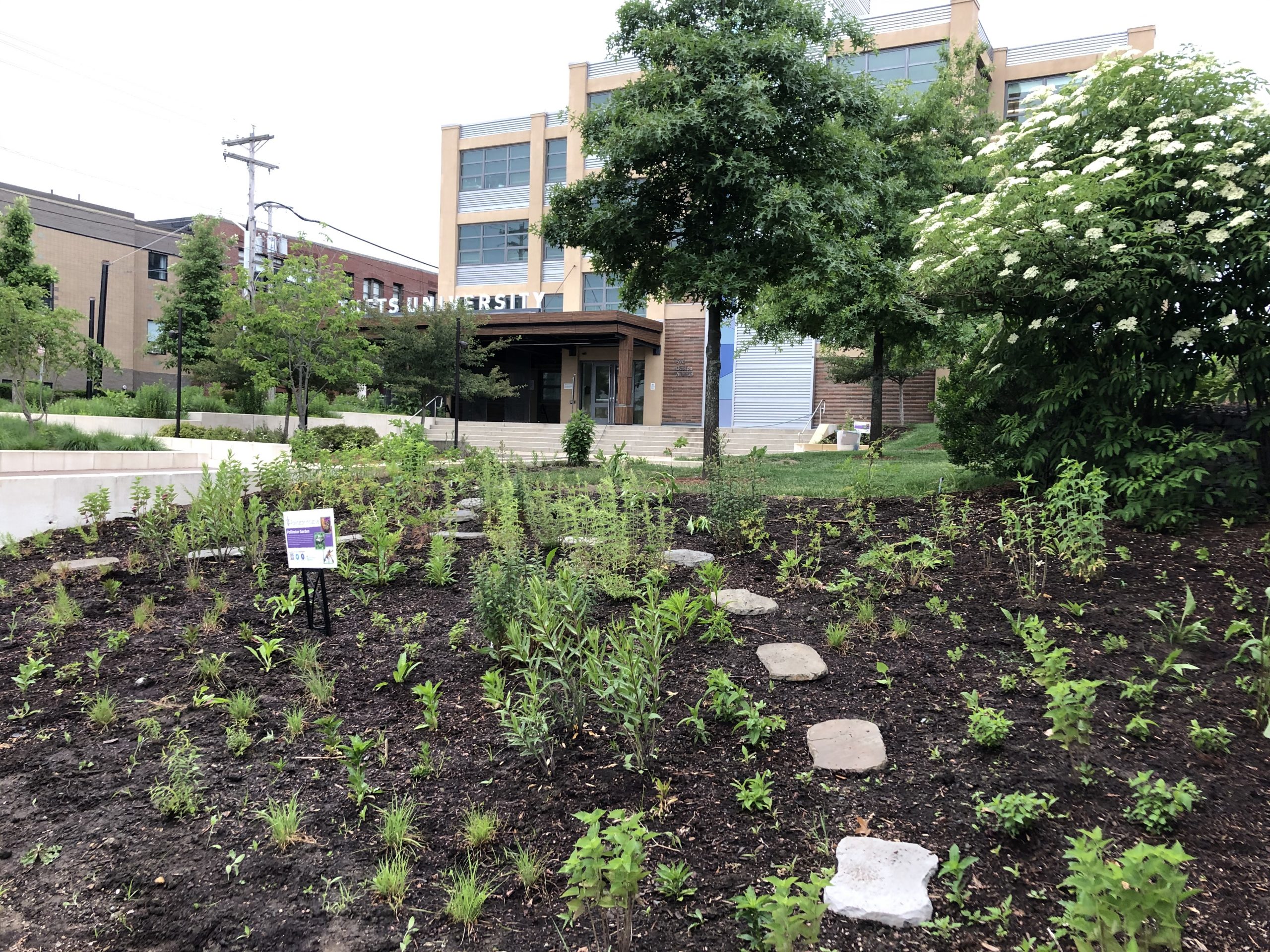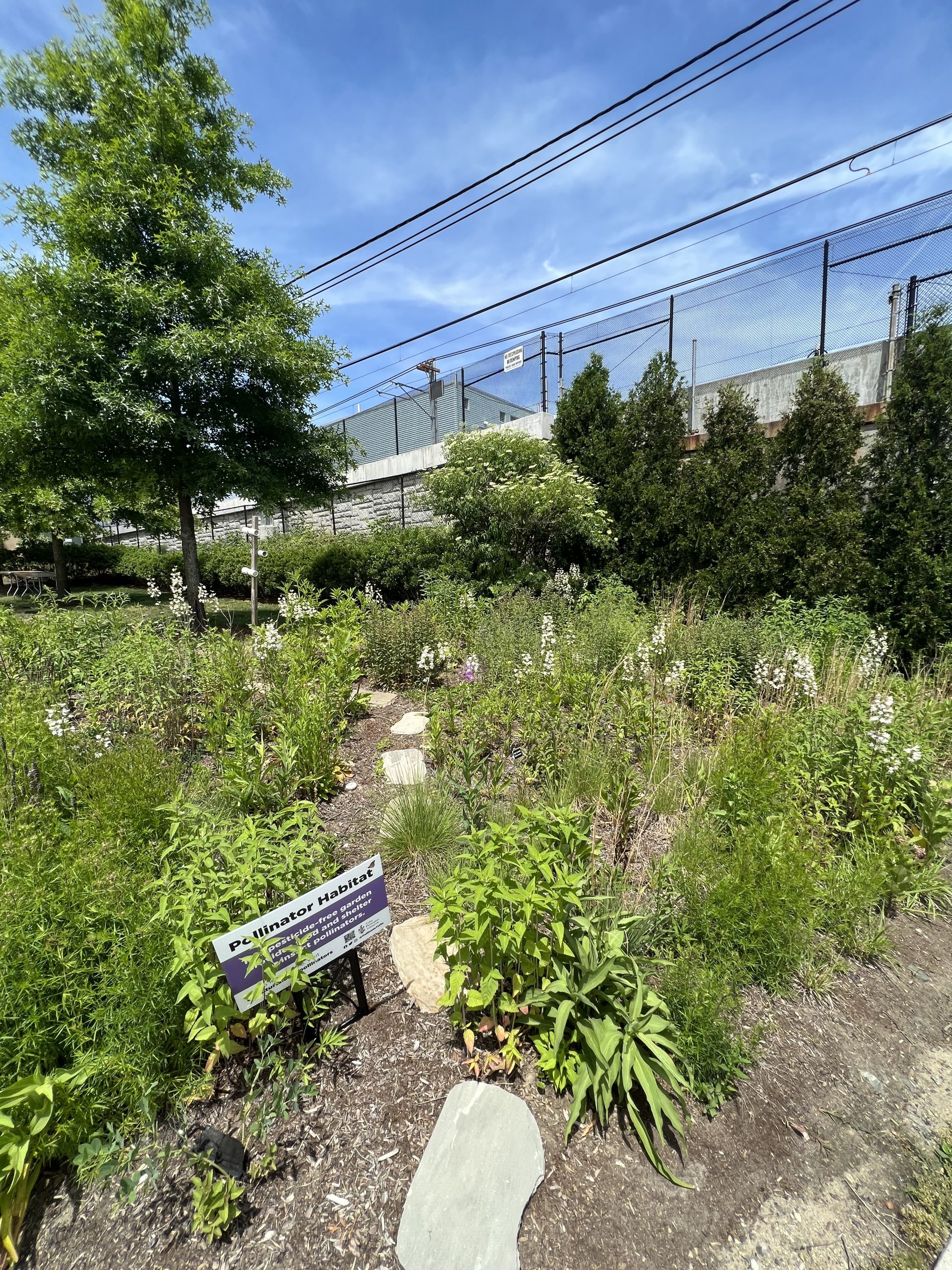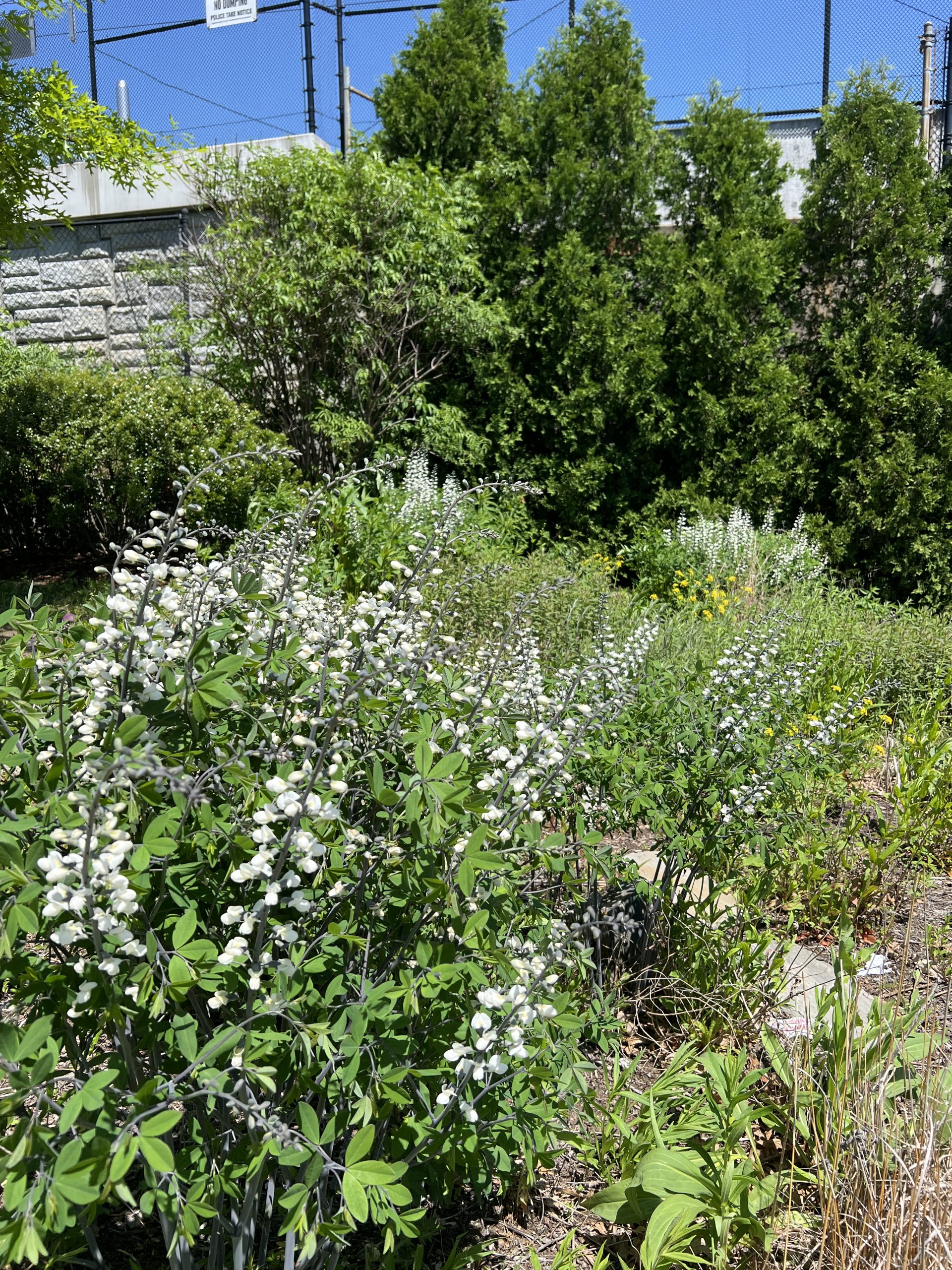We manage over 3000 sq. ft. native pollinator habitat on the Tufts University Medford/Somerville campus.
Our gardens are located at five main sites on campus: 574 Boston Avenue courtyard, Tisch Library, 527 Boston Avenue, Barnum Hall, and Science and Engineering Complex. Each garden contains a diversity of native plants to bloom throughout the year and feed a diversity of pollinators. A map of gardens to explore for pollinators in the Boston area–both on and off campus–can be found here.
Plants in our gardens bloom from May through October, meaning there should always be at least one plant in flower during your visit, and plenty of pollinators to see! Let us know what you find; post your sighting to our iNaturalist project.
All our gardens are pesticide-free and managed according to the university Integrated Pest Management Plan we developed with Tufts Groundkeepers.
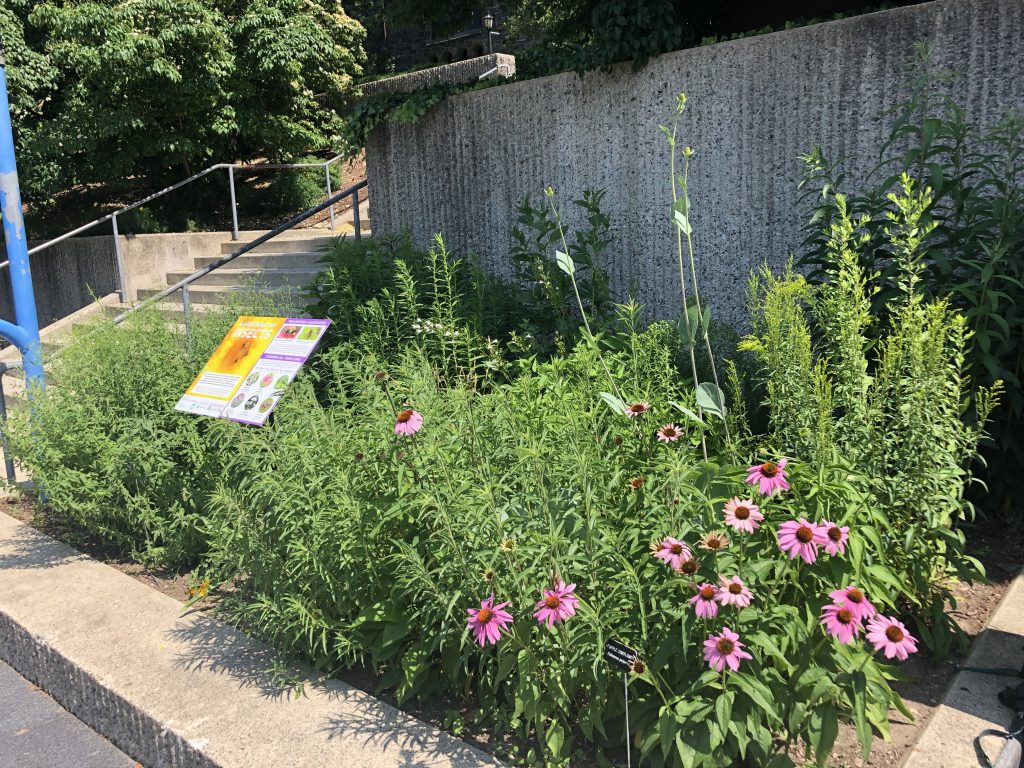
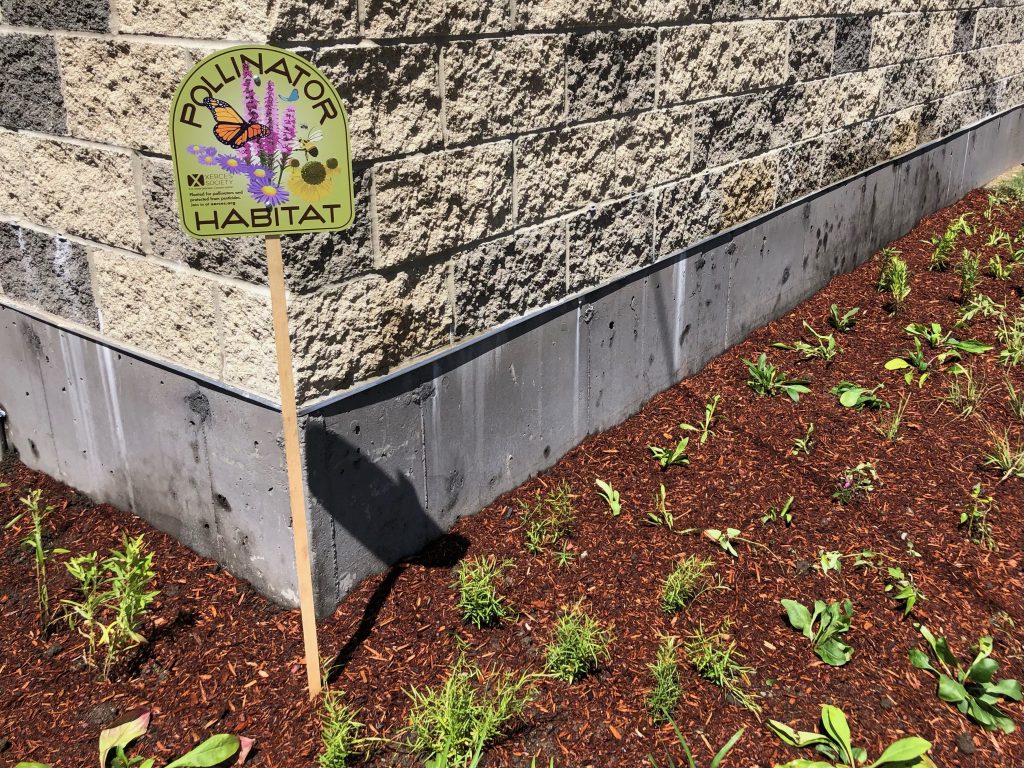
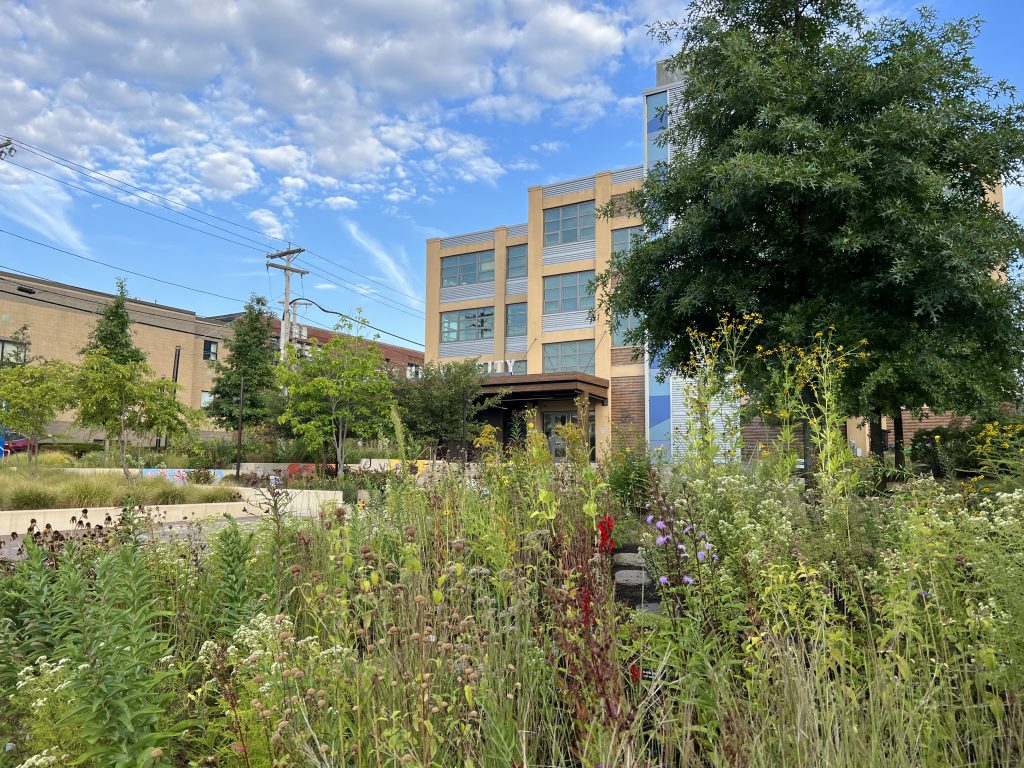
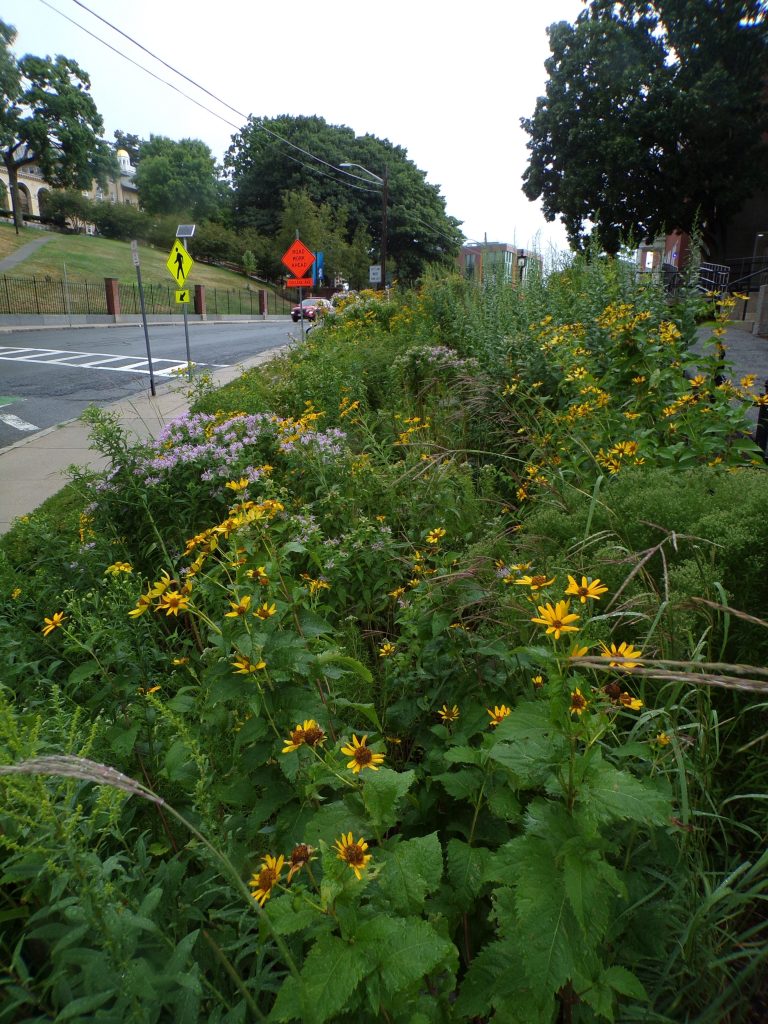
574 Boston Ave
This is our flagship garden, planted with over 20 species of native perennials that are attractive to people and pollinators.
In 2019, we adopted this ornamental garden with hopes of making it native habitat for insect pollinators. We moved around some of the existing perennials and made room for our new plugs from Prairie Nursery. Most plants in the garden spend this year building strong, deep roots that would allow them to flower for years to come.
In May, our established garden is lush! Wool-carder bees, leaf-cutter bees, and sweat bees love the white flowers of foxglove beardtongue (Penstemon digitalis). By mid-summer our garden beds offer a diverse menu including culver’s root (Veronicastrum virginicum), joe-pye weed (Eutrochium maculatum), and sweet coneflower (Rudbeckia subtomentosa). As fall descends on the city, goldenrods (Solidago spp.) and asters (Symphyotrichum spp.) move into the spotlight, feeding pollinators until frost.
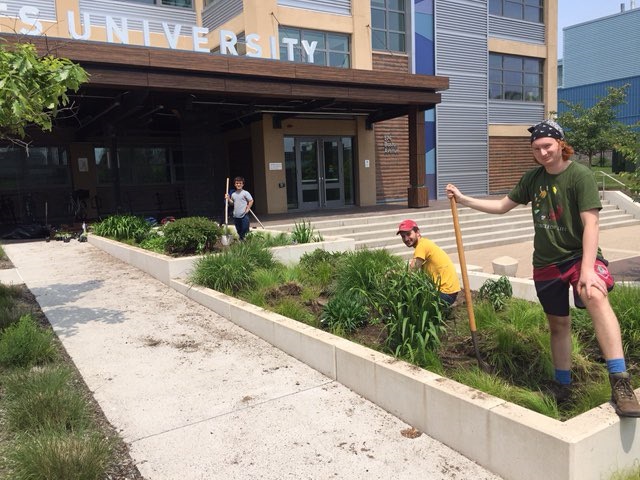
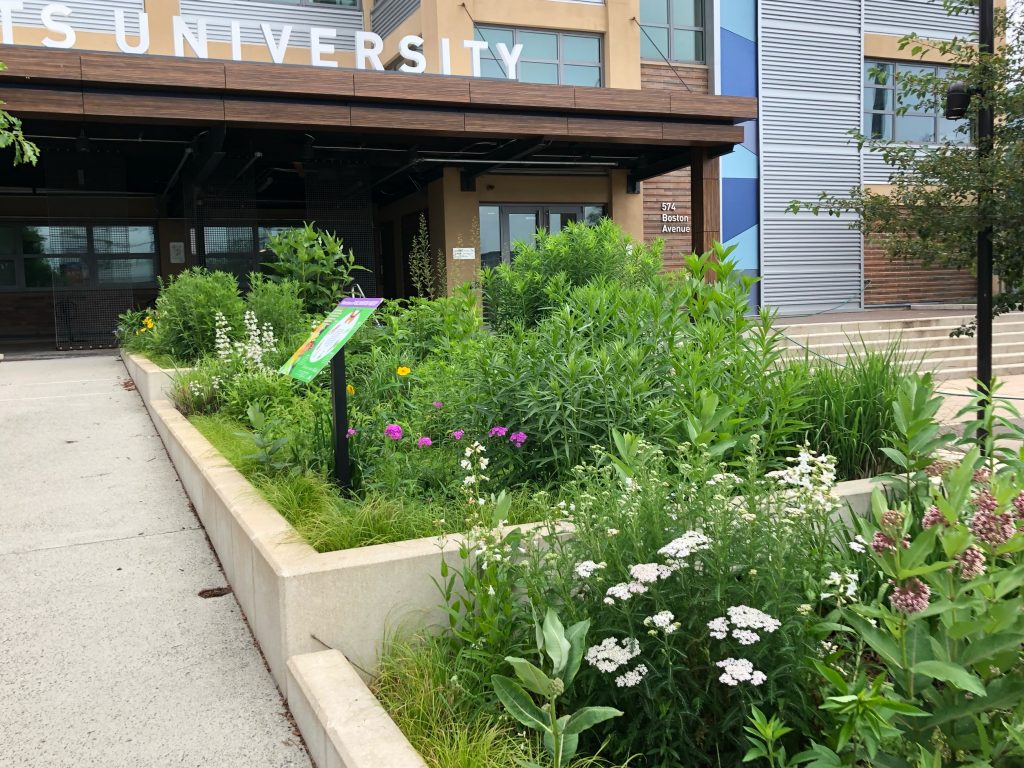
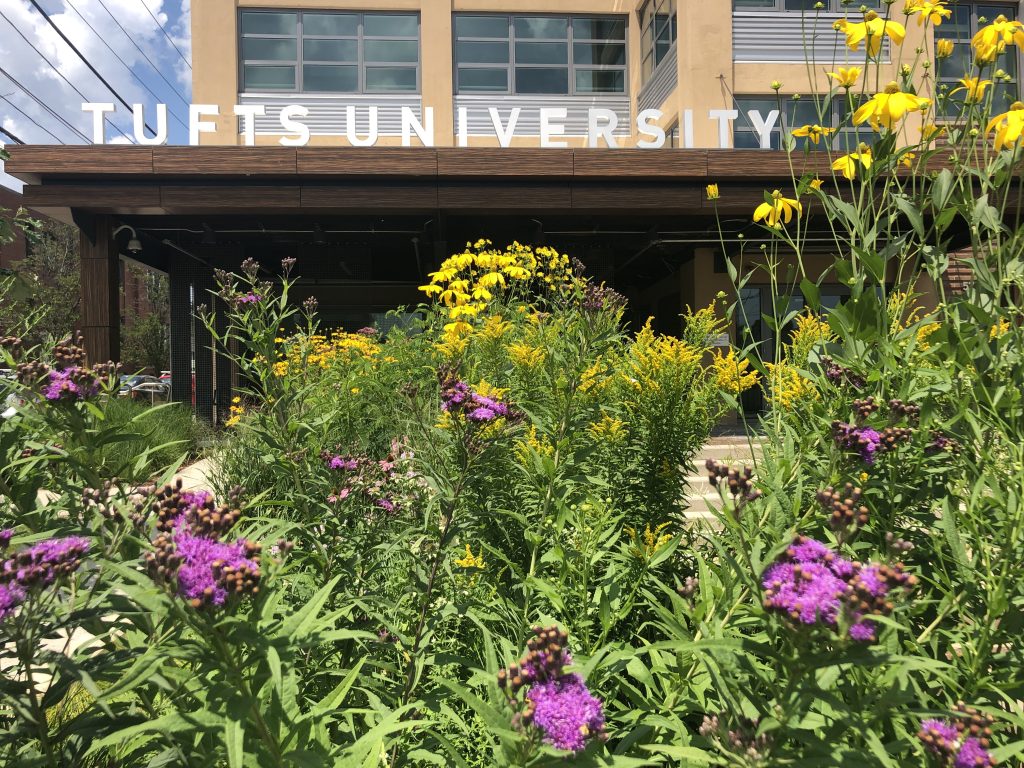
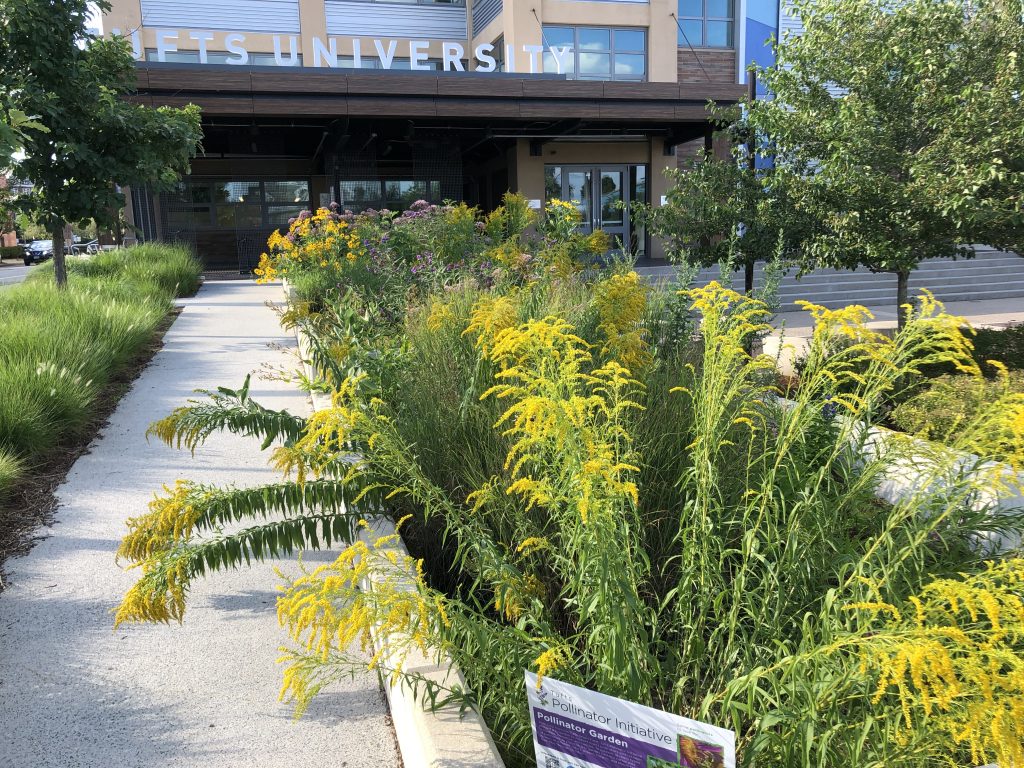
In spring 2021, we expanded the pollinator habitat at the 574 Boston Avenue courtyard. We added new species that were not included in the tiered beds, including cardinal flower (Lobelia cardinalis) and boneset (Eupatoriam perfoliatum). This garden has filled in beautifully, and community members can observe various pollinators up close by using the stone pathways within the garden.
In spring 2022, we further expanded within the courtyard, adding habitat in the far right corner by the building and under the trees in the center square. We added new species to the courtyard, including clustered mountain mint (Pycnanthemum muticum), wrinkleleaf goldenrod (Solidago rugosa), sneezeweed (Helenium autumnale), and golden alexanders (Zizia area). The shade garden was particularly challenging, as many of the species we’ve worked with in our other gardens thrive best with higher sun levels. Additionally, what works best in shade is often a bunny favorite, so we had to explore various bunny proofing methods.
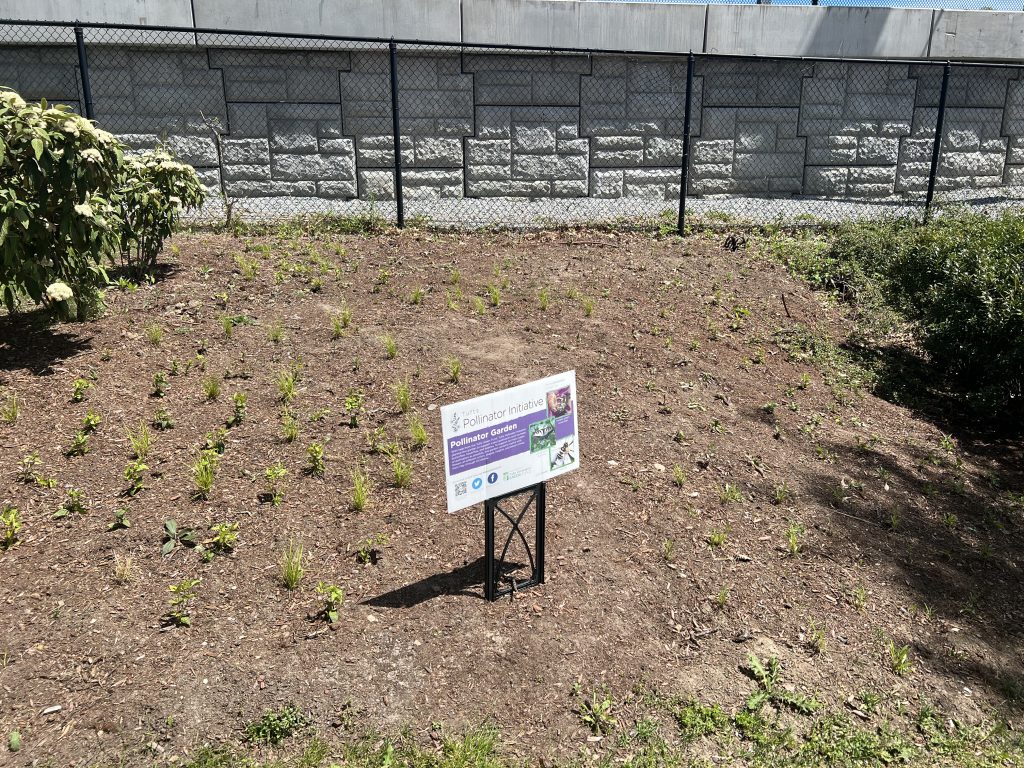
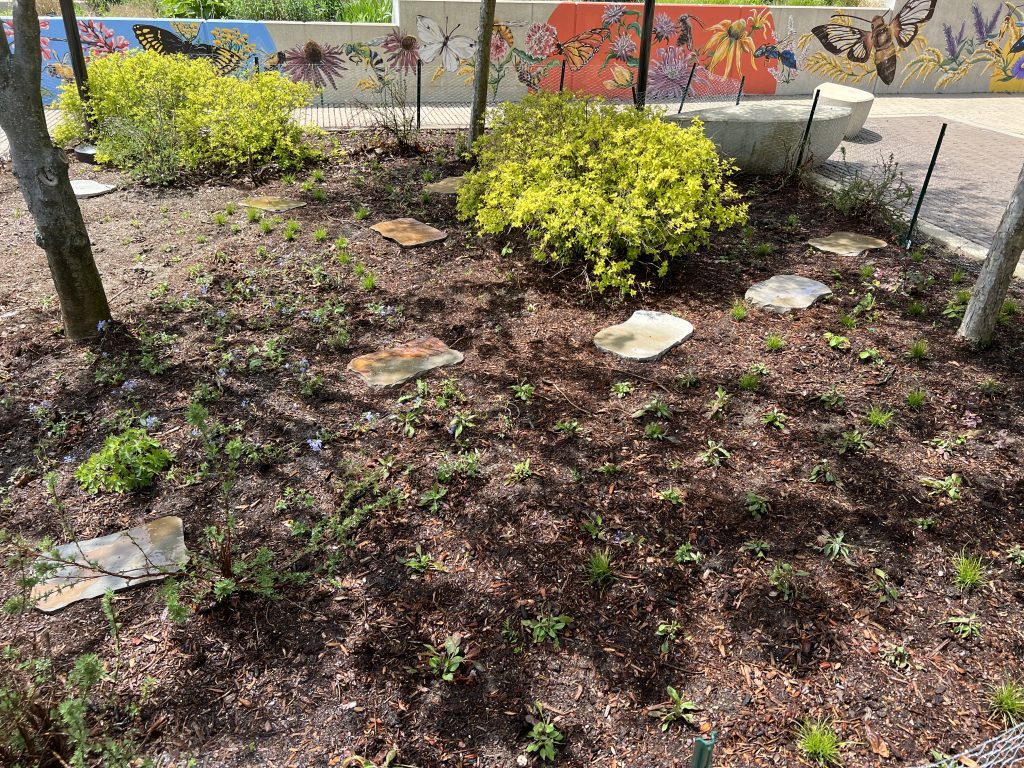
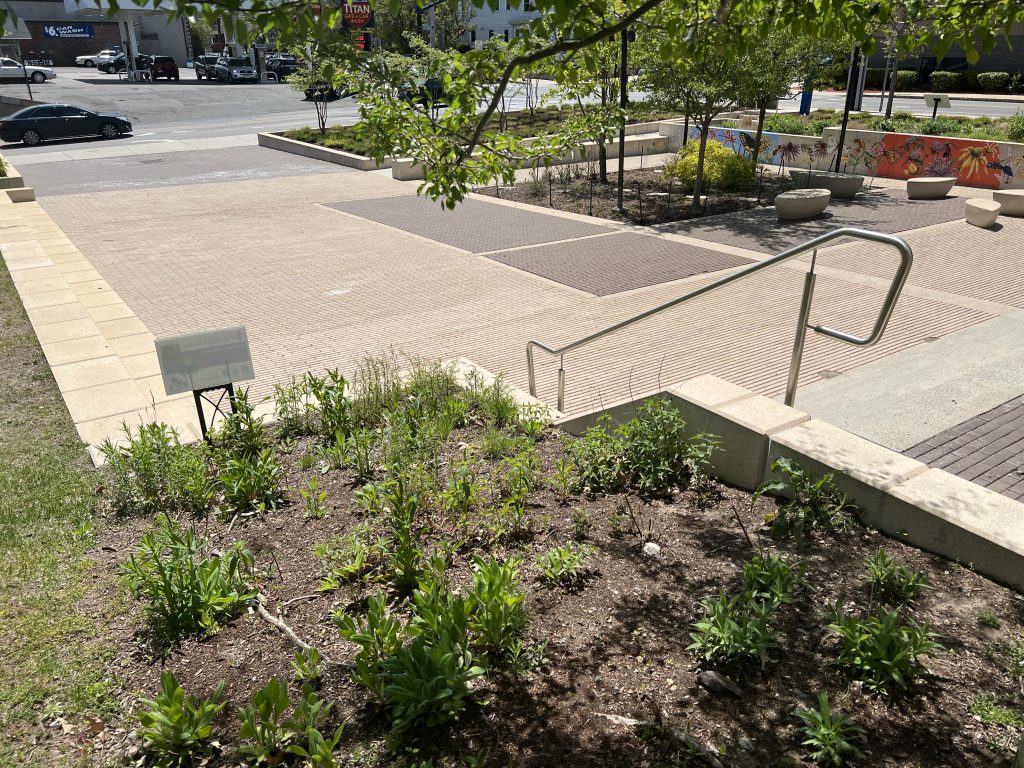
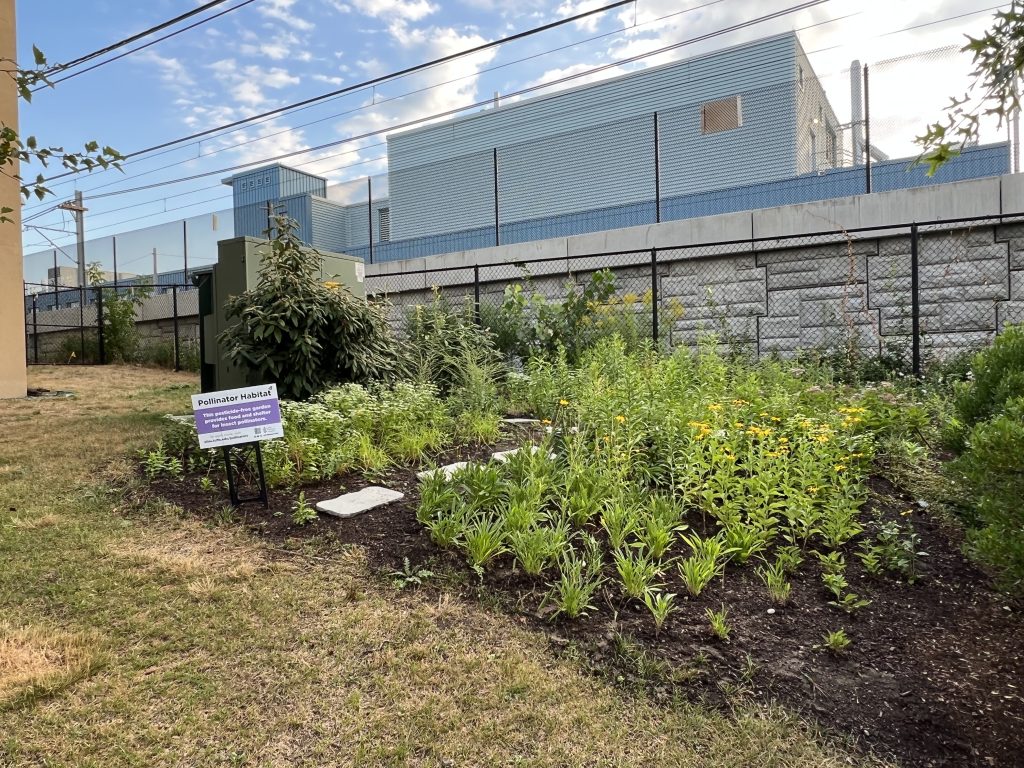
This expansion has people as well as pollinators in mind. We added a bench into the corner garden for those to enjoy a peaceful moment amongst the plants and a cafe table set in the shade garden for students and community members to use. Student artist Audrey Carver painted a pollinator themed mural along the garden beds, which is a stunning display of a variety of pollinators that emerge over the course of the growing season. Student Andrew Daetz constructed the Free Little Seed Library in collaboration with TPI, which we placed in the shade garden. To complete the expansion, we added three informational signs to help guide and enhance garden users’ experience. We hope these additional gardens and amenities further encourage enjoyment of the outdoor space.
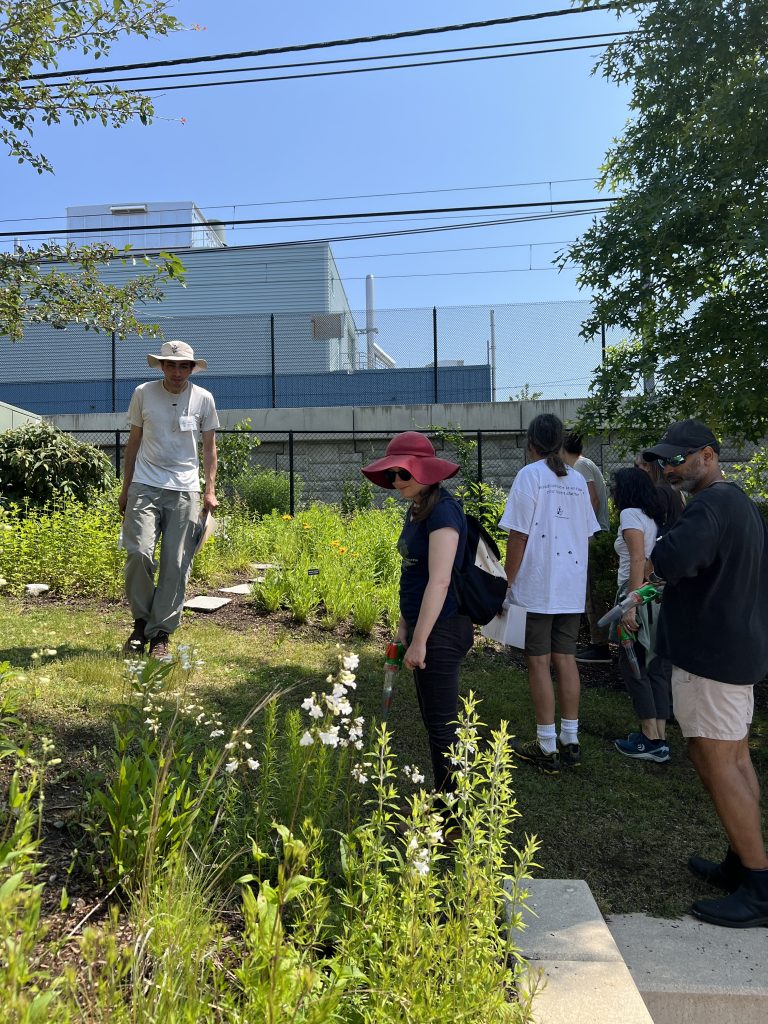
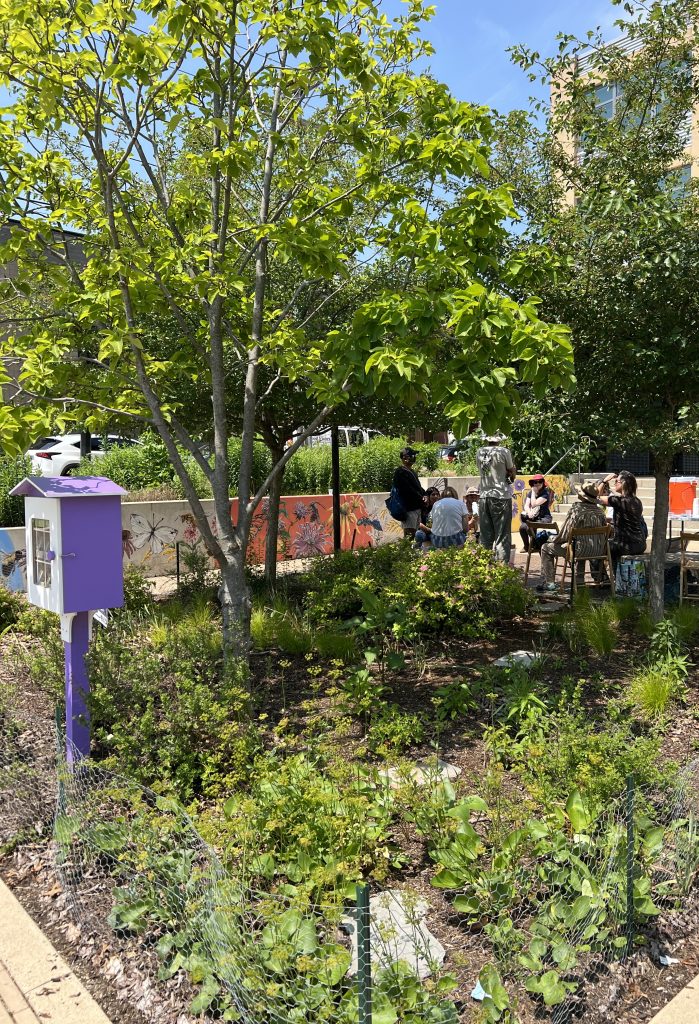
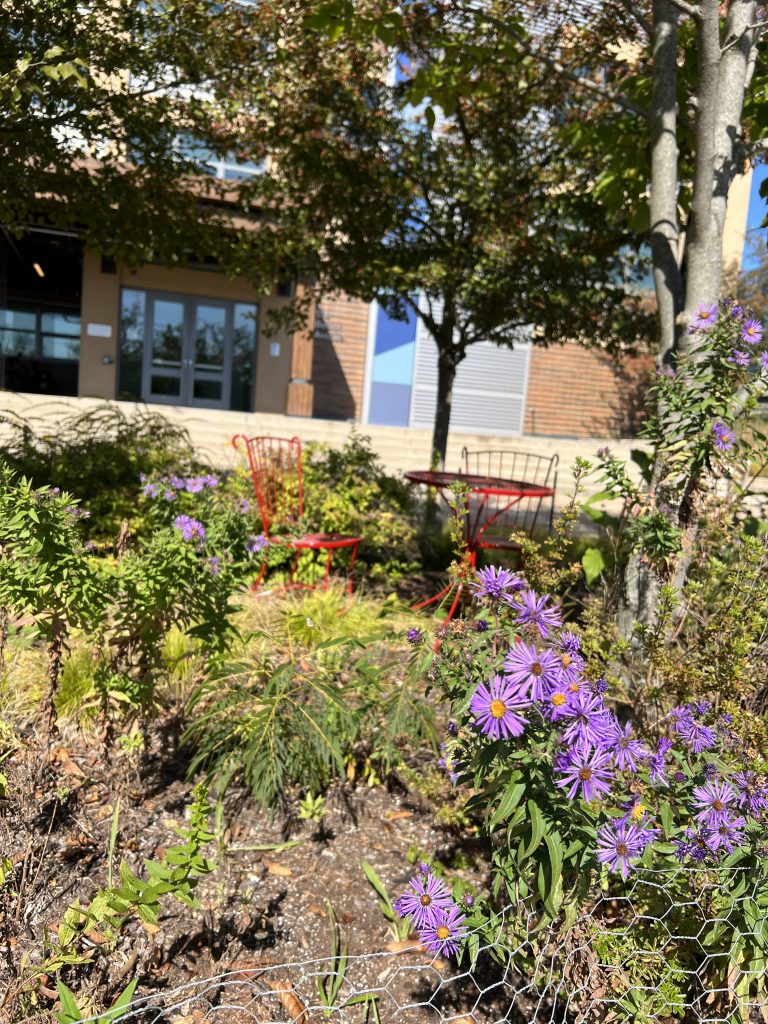
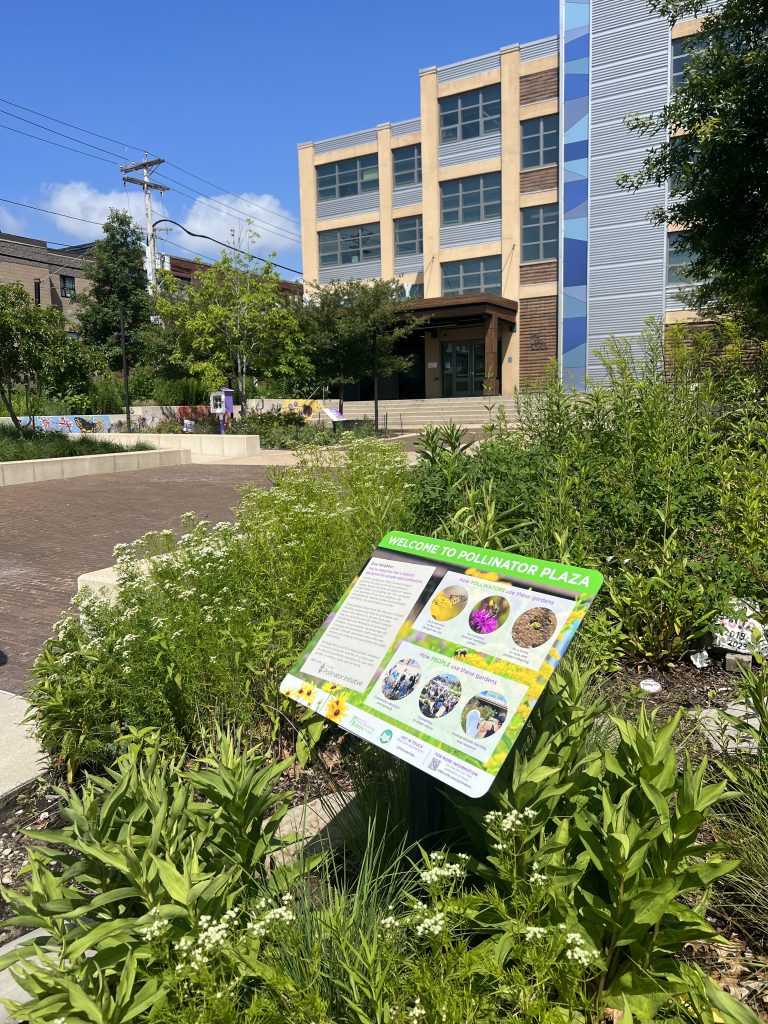
Tisch Library
Our Tisch Library garden, located in the middle of “The Hill,” greets campus visitors of all kinds: pollinators passing through, students on their way to the library, and future Jumbos on college tours.
It took hard work to get this bed in shape for planting. The soil was clayey, hard-packed, and shallow. We removed non-native day lilies and salvias and chose 15+ native perennial species for this bed. We planted this garden in spring 2019 and some additional native perennials were added in spring 2020 to fill in remaining gaps.
In spring, this garden feeds pollinators with foxglove beardtongue (Penstemon digitalis) and lance-leaf coreopsis (Coreopsis lanceolata). Come summer, our garden pops with fireworks of purple coneflower (Echinacea purpurea), early goldenrod (Solidago juncea), and cutleaf coneflower (Rudbeckia laciniata). Into fall, New York ironweed (Vernonia noveboracensis) and New England aster (Symphyotrichum novae-angliae) take center stage, providing food and shelter to pollinators preparing for hibernation.
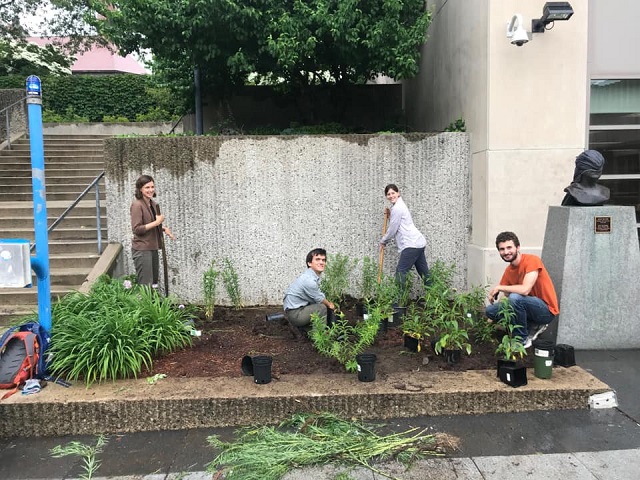
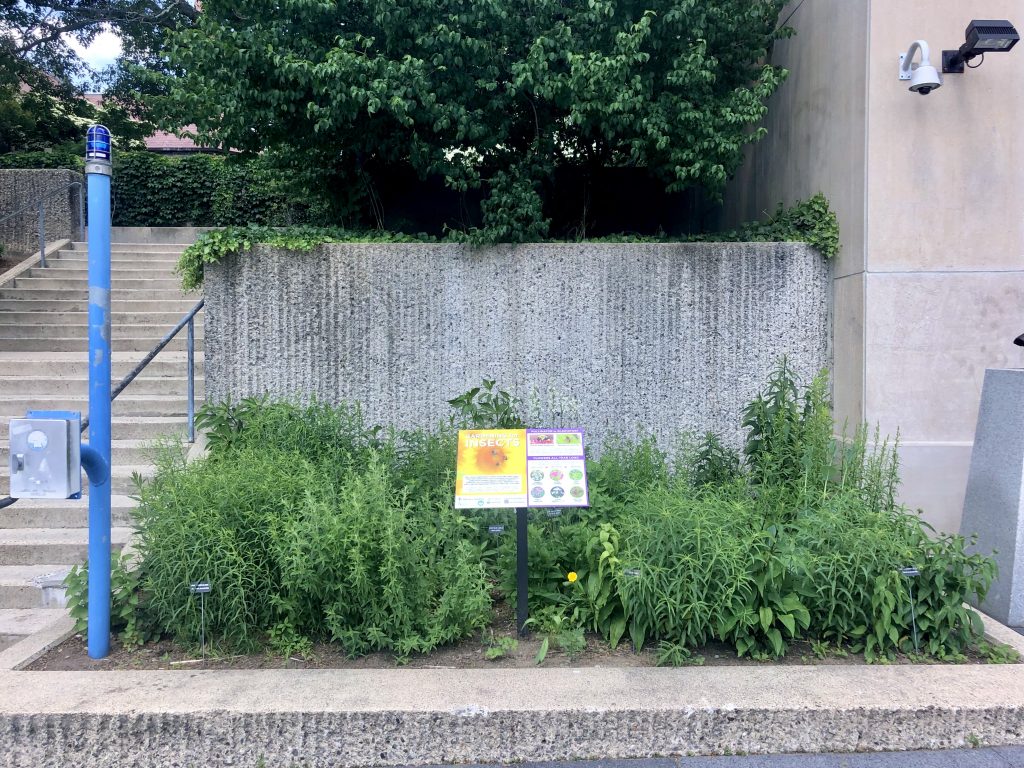
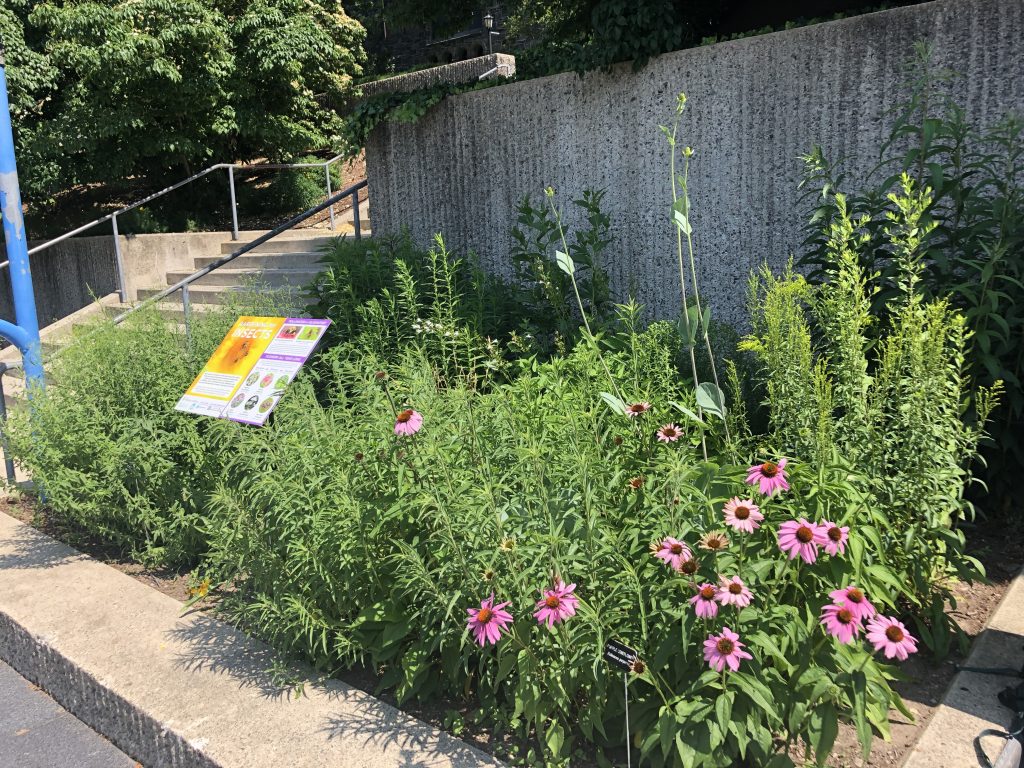
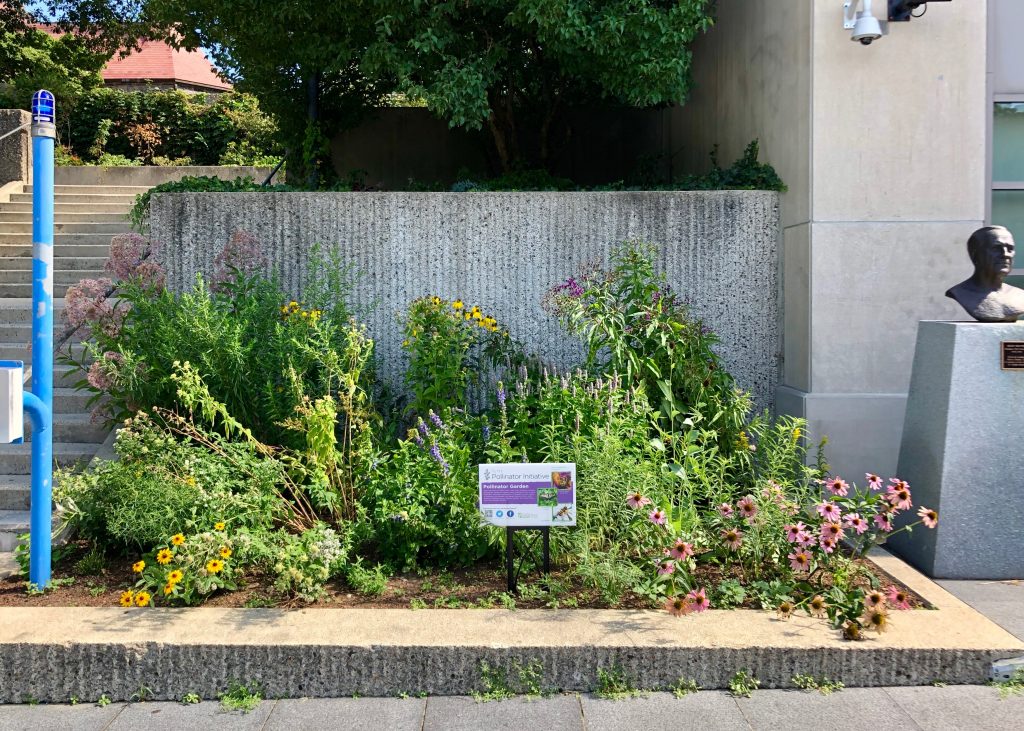
527 Boston Avenue
In collaboration with Tufts Facilities, we planted this garden across from Semolina Kitchen to serve as a stepping stone between our 574 Boston Avenue and Tisch Library gardens. This garden was planted with a palette of white, yellows, and purple plants to be attractive to both people and pollinators! It bursts with wild bergamot (Monarda fistulosa), tall spires of evening primrose (Oenothera biennis), and clumps of mountain mint (Pycnanthemum tenuifolium).
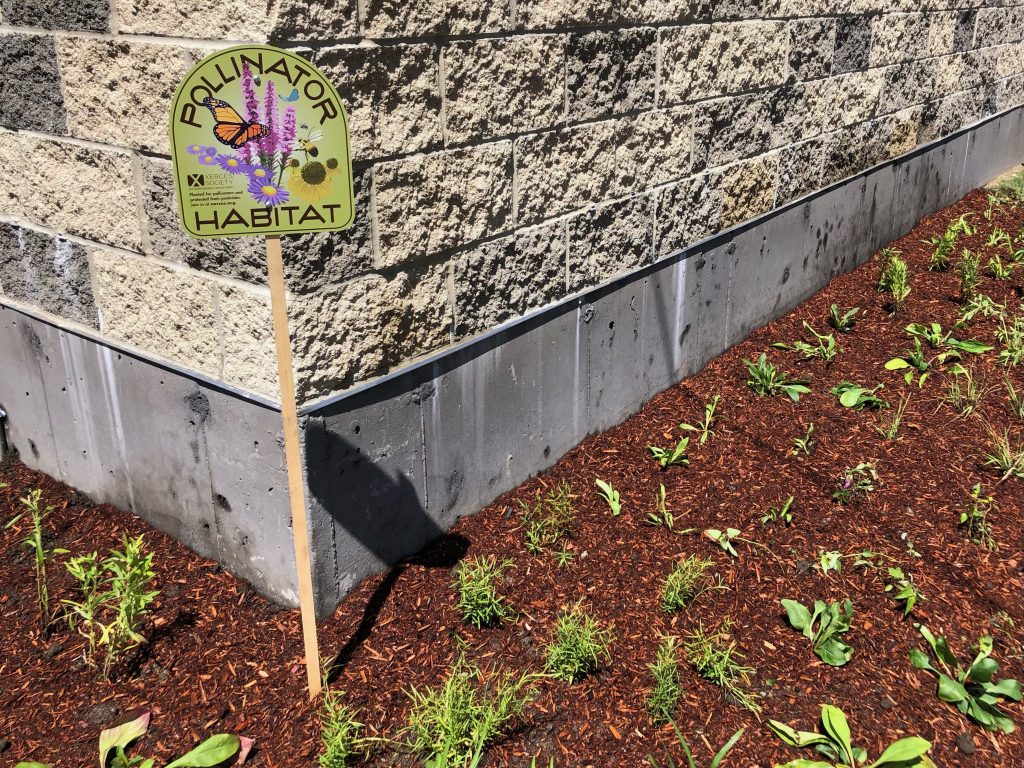
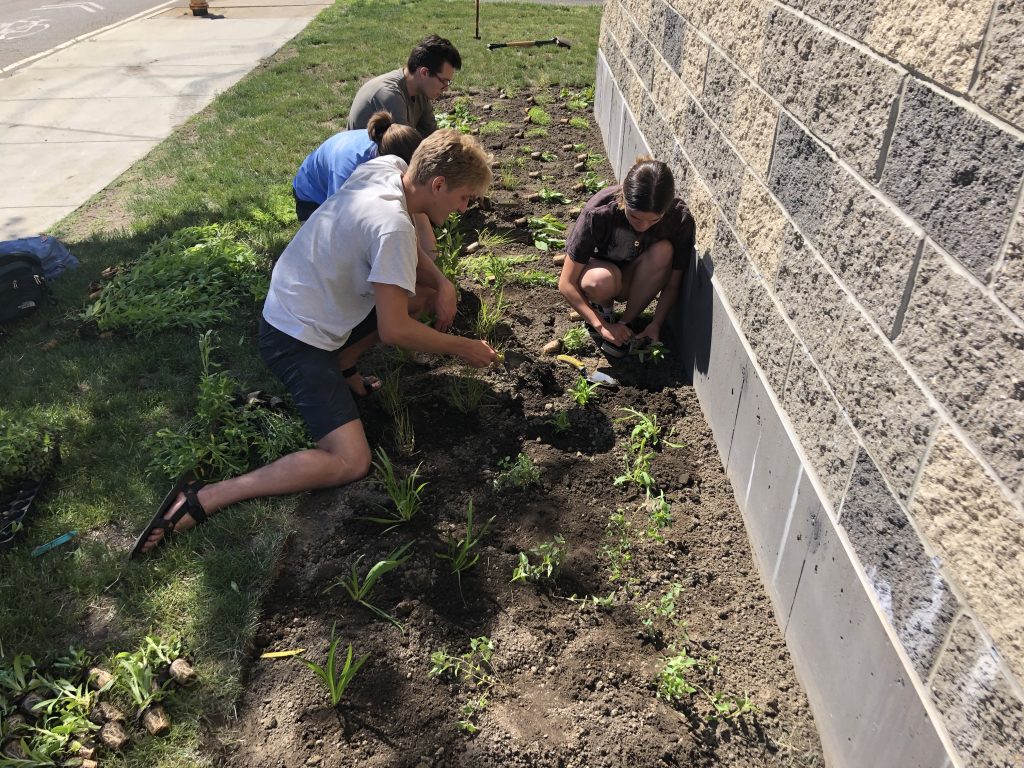
Science and Engineering Complex (SEC Robinson)
Our newest garden is located outside of the SEC, a high traffic location on campus. Planted end of July 2022, it took a lot of commitment to ensure this garden established well due to the dry conditions of the summer. With regular watering, the garden took off. It is lush in early spring/summer and by mid summer is full of blooms. It includes new species for our campus gardens, including narrow-leaved sundrops (Oenethera fruiticosa), shrubby St. John’s wort (Hypericum prolificum), and hyssopleaf thoroughwort (Eupatorium hyssopifolium). Showy goldenrod and hyssopleaf thoroughwort ensure the garden continues blooming well into the fall.
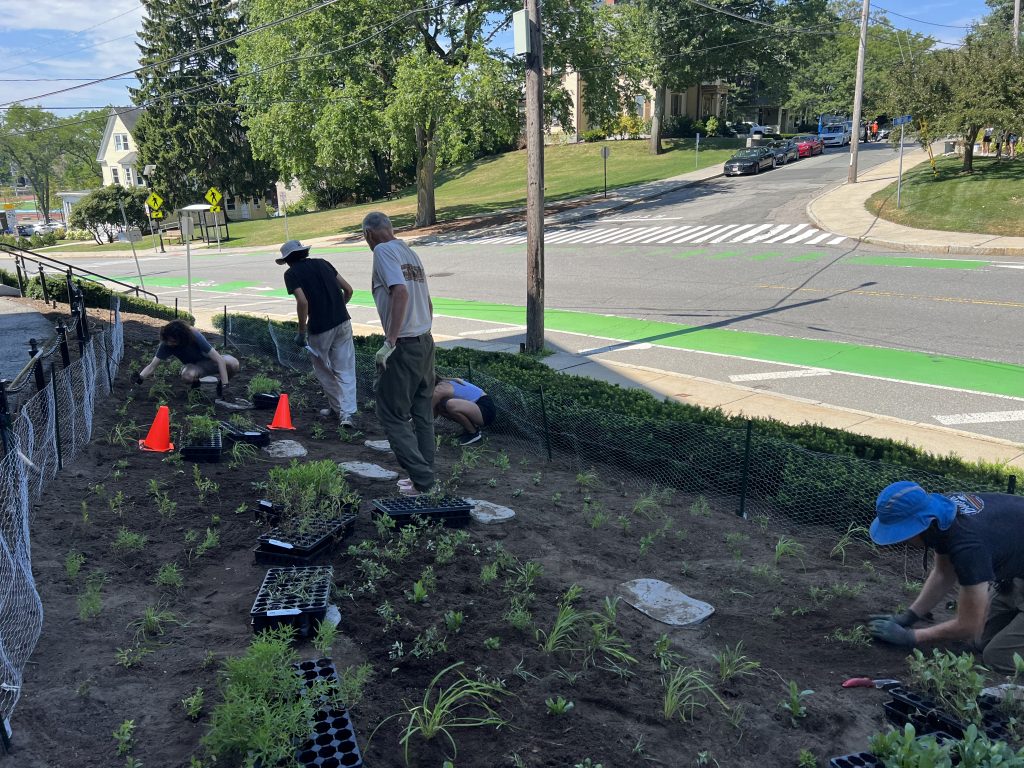
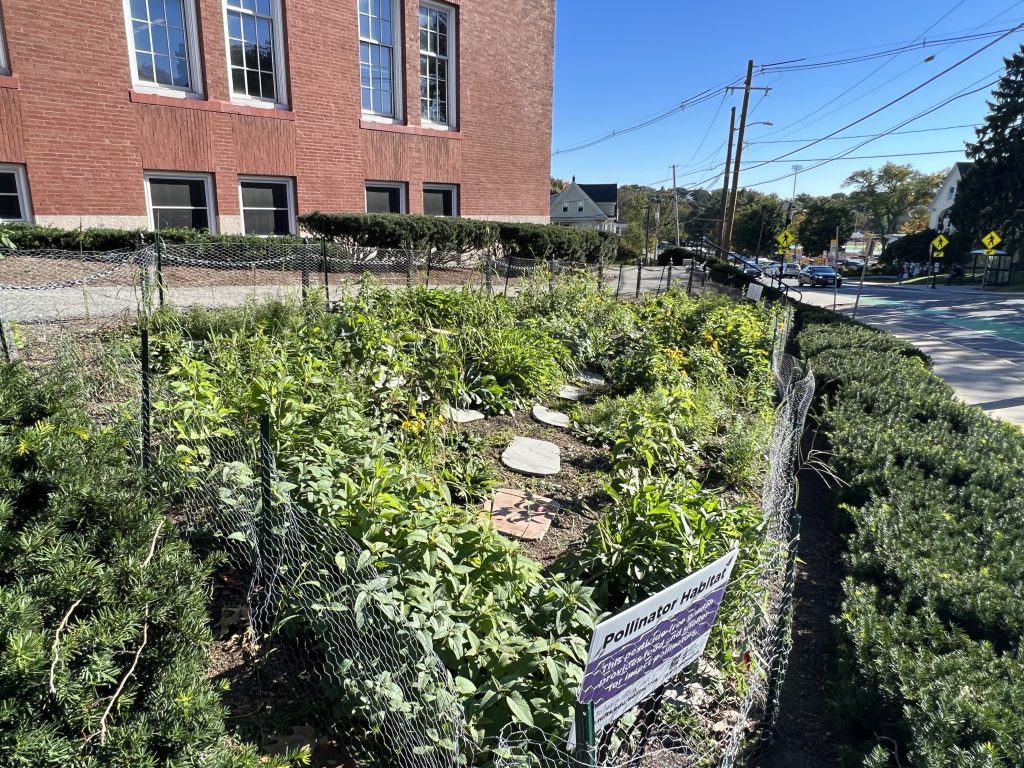
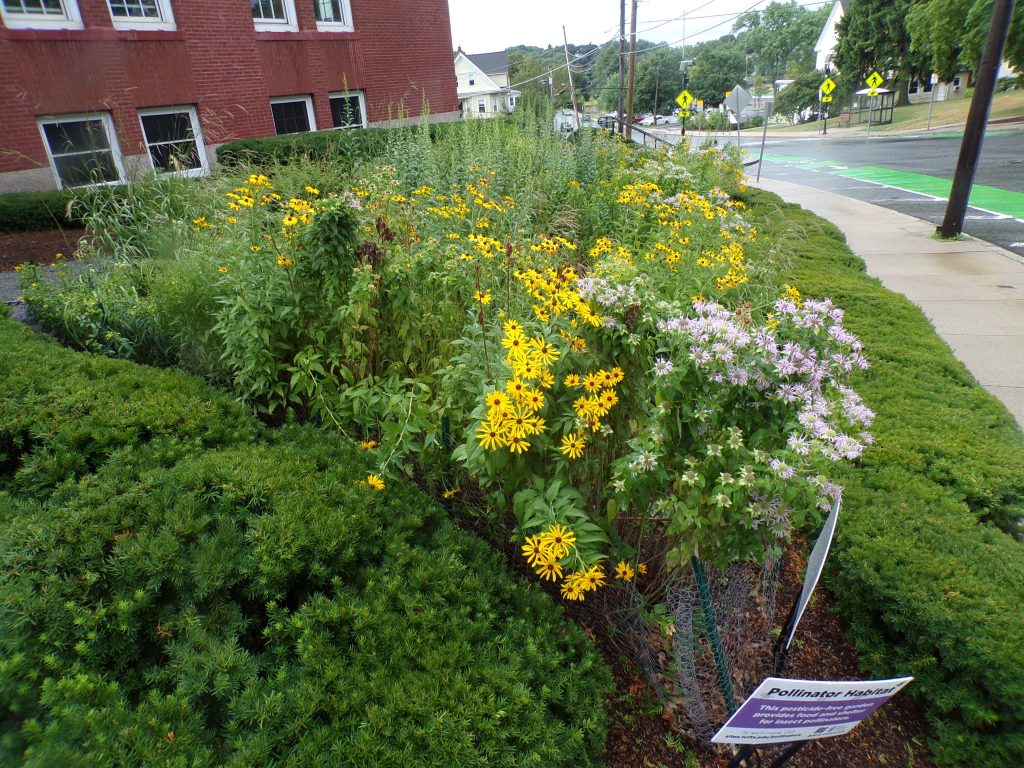
Barnum Research Garden
This garden serves two purposes: to support insects and to grow seedlings for our annual native plant sale. Each year, we harvest seeds from our demonstration gardens, germinate them in the Tufts greenhouse, and take care of them until they’re big enough for your garden.
Before germination can occur, we stratify seeds outside on bare soil over the course of the winter. Stratifying seeds in cold temperatures breaks down chemicals within seeds that inhibit premature germination. Most native New England plants need some form of winter in order to germinate in spring. Once germinated, the seedlings are transplanted into pots to give them space to grow large enough to be planted in gardens.
The Barnum research garden has turned into its own pollinator garden. The wet soils allow for many species of plants to thrive and grow tall, including cup plant (Silphium perfoliatum) , cutleaf coneflower (Rudbeckia laciniata), and asters (Symphyotrichum spp.).
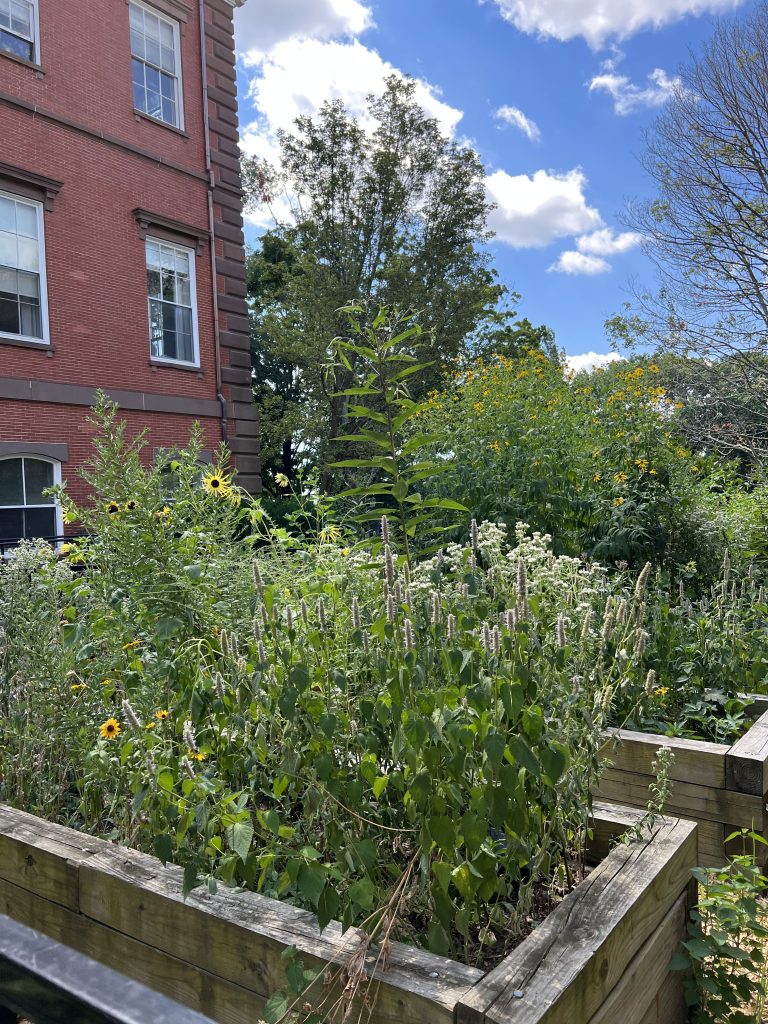
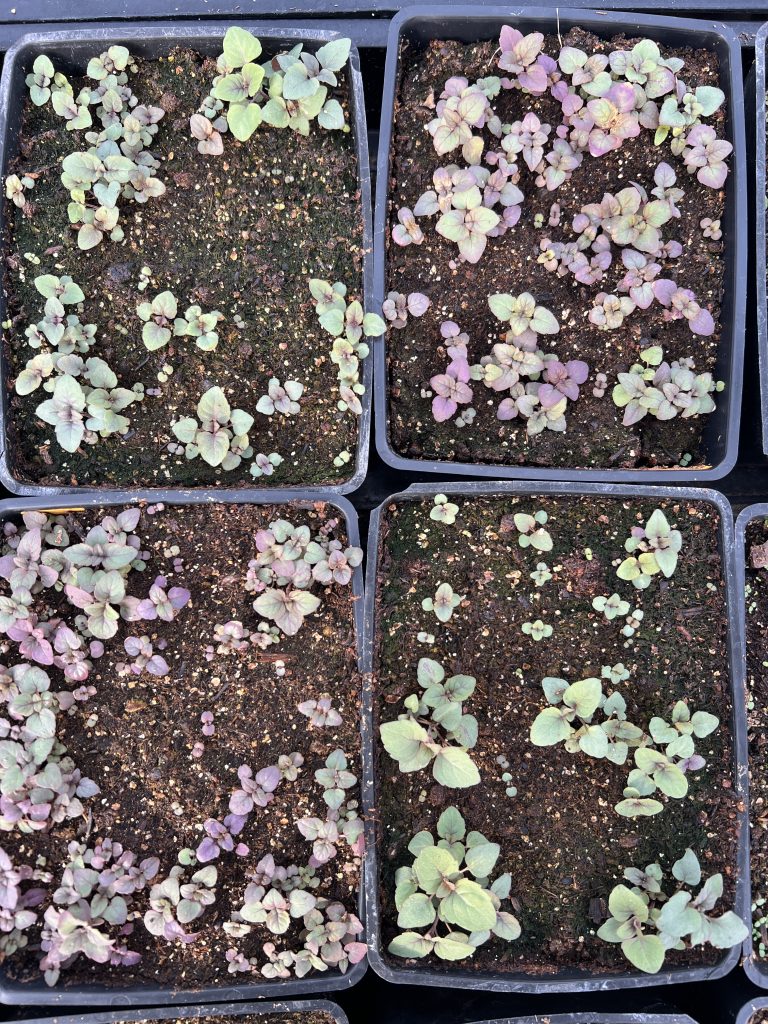
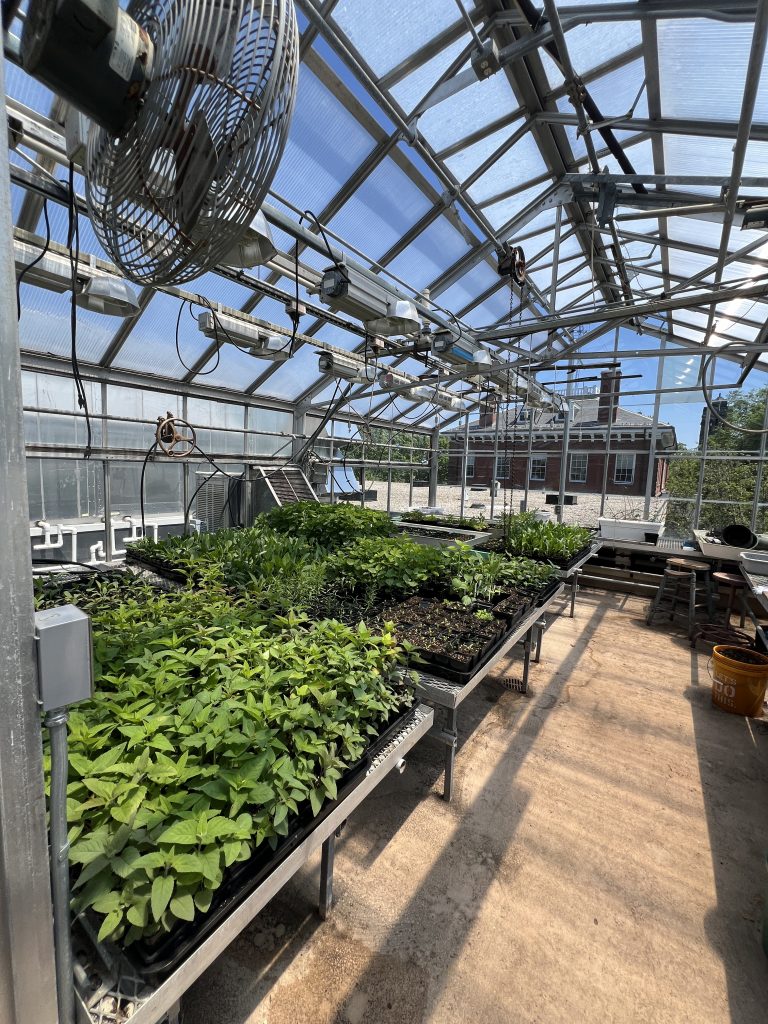
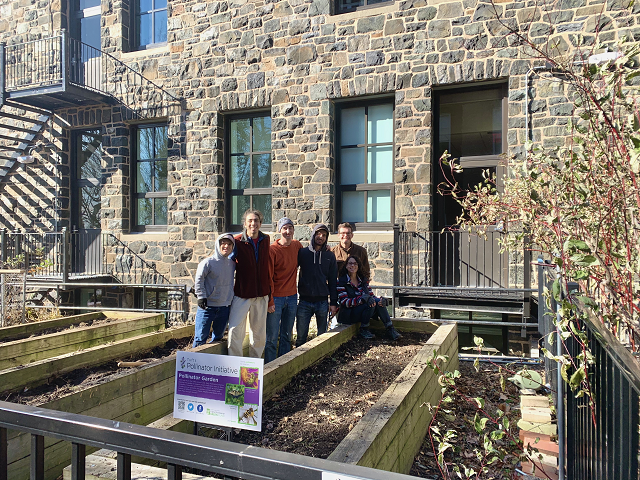
Tisch Library Green Roof
The iconic “TUFTS” green roof garden underwent a partial revitalization Fall 2020 through a GreenFund project carried out by the Tufts Student Garden Club in consultation with TPI. Weeds and dead plants were removed from a portion of the existing flats in the line underneath “TUFTS” as well as the “S”. The flats were replanted with native pollinator plants including bird’s foot violets, black-eyed susans, butterflyweed, and others.
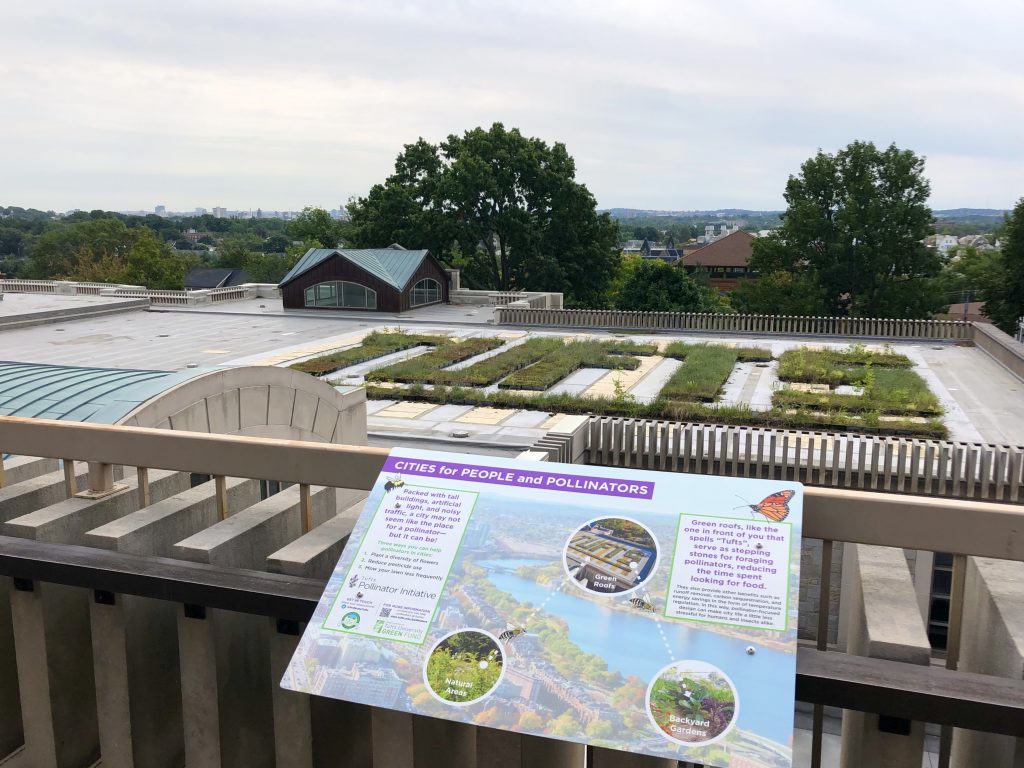
Some of the plants you can find in our pollinator gardens:
- Foxglove beardtongue (Penstemon digitalis)
- Wild bee balm (Monarda fistulosa)
- Purple coneflower (Echinacea purpurea)
- Culver’s root (Veronicastrum virginicum)
- False white indigo (Baptisia alba)
- Goldenrods (Solidago spp.)
- Great blue lobelia (Lobelia siphilitica)
- New York ironweed (Vernonia noveboracensis)
- Joe-pye weed (Eutrochium maculatum)
- Black-eyed susan (Rudbeckia hirta)
- Cutleaf coneflower (Rudbeckia laciniata)
- New England aster (Symphyotrichum novae-angliae)
- Smooth blue aster (Symphyotrichum laeve)
- Swamp milkweed (Asclepias incarnata)
- Wild senna (Senna hebecarpa)
- Anise hyssop (Agastache foeniculum)


